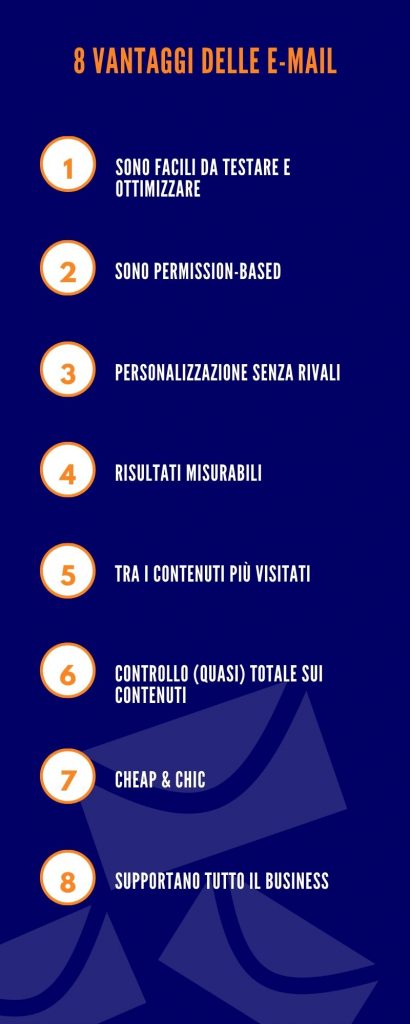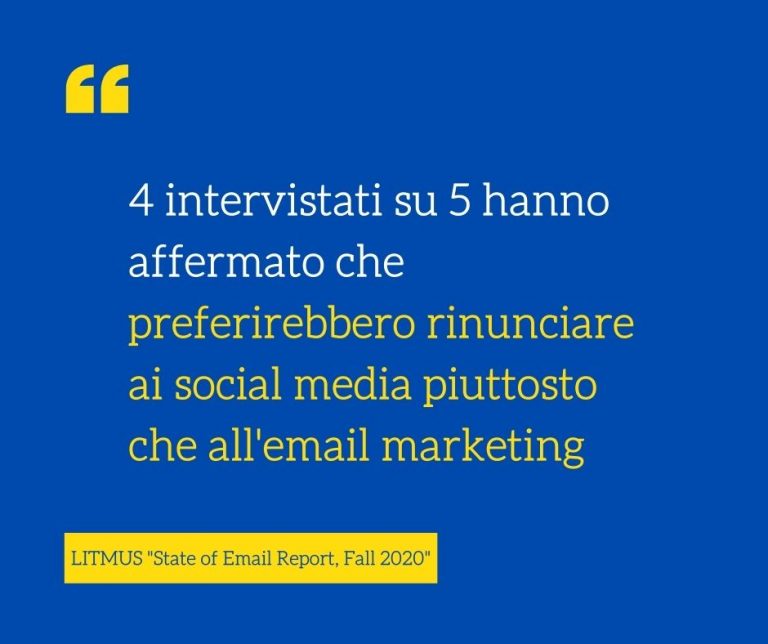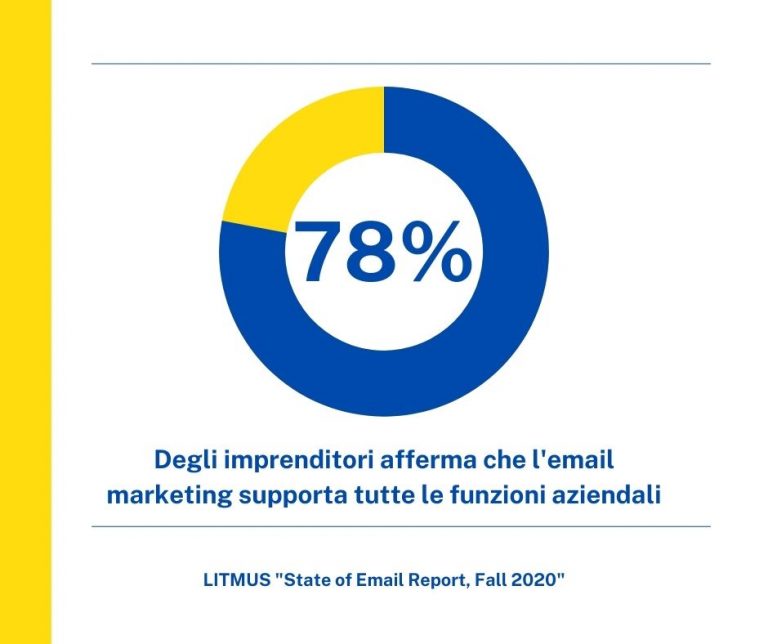Why are emails still so effective? Let's discover the advantages.
They are still the digital marketing tool with the highest ROI. They support companies not only in marketing and sales but also in an extensive CRM capacity. They seem timeless, but how do they do it?
There are videos, social media, apps, instant messaging, display advertising, etc. Companies today have numerous digital marketing tools that we could define as innovative.
But despite this, 94% of companies still strongly believe that email marketing remains among the top 3 strategies in terms of profits generated and campaign success.
How is it still so effective?
1. They are easy to test and optimize
Using the A/B Test technique, it's possible to test many elements of an email: the content; the subjects; the layout.
By analyzing the metrics, we can optimize the content, reworking it in the form that appeals to and engages our audience the most.
2. They are permission-based
Unlike many other digital marketing tools, such as web and social media advertising, emails are based on the consent given by your audience.
Users have expressed their desire to receive our messages. And perhaps they are eagerly awaiting news and current promotions from us.
3. Unrivaled customization
Measurability has always been one of the strengths of emails. Both in terms of ROI and tracking.
The available metrics are quite substantial: opens, clicks, bounces, average time spent, conversions, unsubscribes…
Analyzing this data provides us with unmatched insights compared to other media and digital channels.
4. Measurable results
By communicating with users we know, we can achieve the extreme level of personalization: 1-to-1.
With the right tools, such as Marketing Automation, it's possible to create messages that are so customized they almost seem tailor-made.
5. Among the most visited places by users
An user spends 2.5 hours a day in their inbox.
We can be almost certain that, if not immediately, within a few days, each delivered message will be viewed.
And unlike other channels and media, the inbox is a personal and private archive. The dedication that users put into reading emails is unmatched.
6. (Almost) total control over the content
Many media channels, like social or display advertising, typically impose several restrictions on content management (permitted characters, image formats, etc.).
In emails, control over the content is instead in our hands. From the choice of layout to the selection of individual elements and formats.
7. Cheap & Chic
Although it is possible to create truly impactful email campaigns, you won't need a significant investment.
If we have a good user base to target with the campaigns, it will be enough to gather a good dose of creativity and a couple of tools (shipping platform, source of graphic content).
Emails remain the most cost-effective digital media there is. And this also allows for being very quick and timely.

8. They support the entire business.
Not only do they support other digital channels, but more generally, emails cross-functionally support all Business functions of our company.
Whether it is about sales in the strict sense or CRM and customer service, emails have an unparalleled versatility.



Conclusions
Years pass, even decades, yet they continue to be an indispensable tool for our Business. The advantages offered by emails are truly cross-functional: sales, loyalty, strengthening relationships with users and customers.
The fact that we will certainly continue to do email marketing does not mean that we have to do it in exactly the same way. There are two success variables in the coming years that we need to focus on:
1. increasingly advanced personalization;
2. tools for collecting and analyzing data from campaigns.
The greater personalization will help us communicate with users individually, in an exclusive manner. Because that’s what they expect to find in the Inbox: personal messages.
The collection and analysis of data will help us understand what users like and dislike, what is working and what is not.
And so on one hand, it will enrich our knowledge of users and their preferences. On the other, it will allow us to focus resources on initiatives that work, avoiding resource wastage.
Tagged blog

